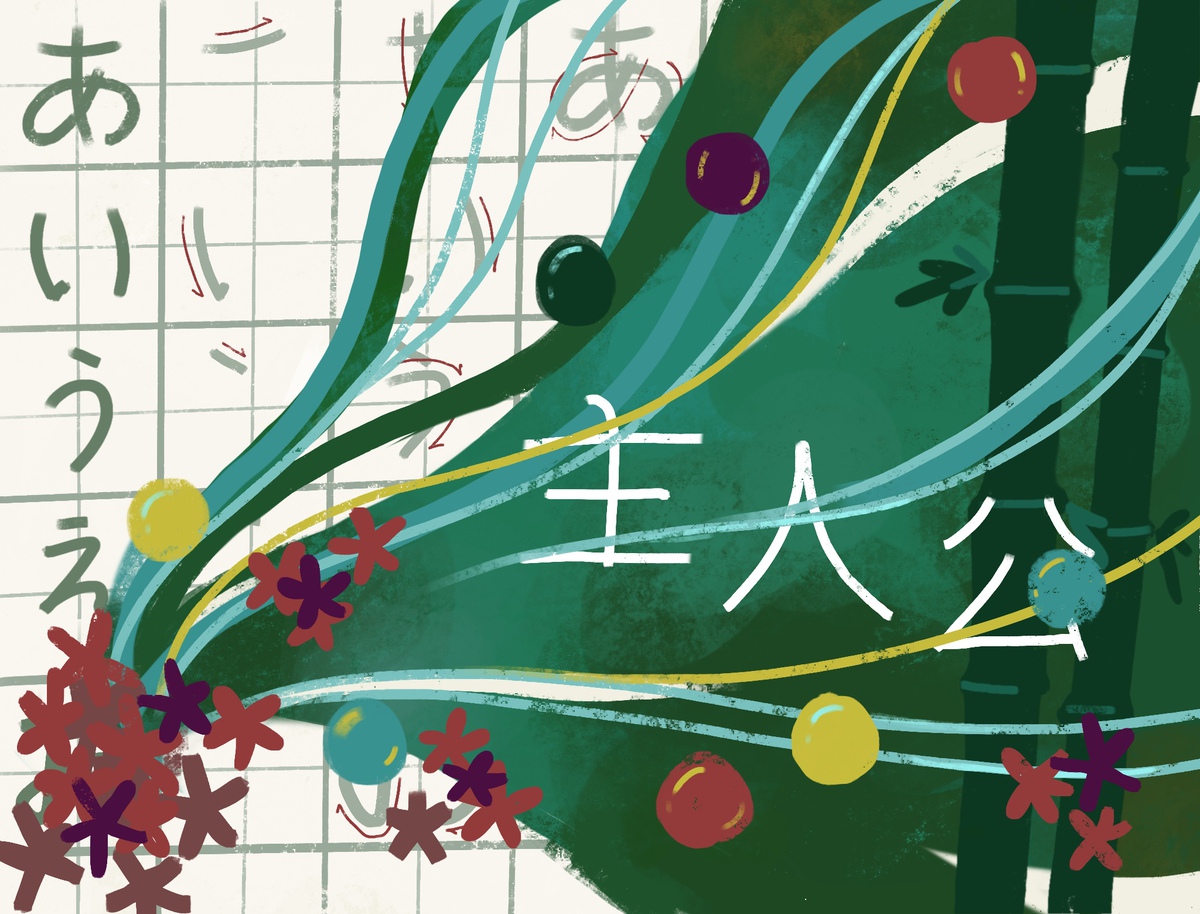Students create Japanese language-learning game geared toward gamers

(Nghi Nguyen/Daily Bruin)
By Kaia Sherry
Nov. 5, 2019 11:14 p.m.
Shujinkou weaponizes Japanese language characters to defeat grammatical demons.
The role-playing game, developed by fourth-year linguistics and computer science student Julian Rice, aims to teach Japanese while maintaining the fast-paced action of a traditional game. Shujinkou’s Kickstarter campaign, which has garnered almost $30,000, ended Tuesday. The plot revolves around demons that spawn from the Hasseiki, or hellish entrance points within the game’s universe, that are stealing the Japanese language from the world. Each player can choose between three characters, aptly named Shu, Jin and Kou, to thwart the demons while learning the mechanics of grammar along the way, Rice said.
“We’re not really holding the hand of the players,” Rice said. “It’s meant to be a language-learning game that not only appeals to new language-learners, but also experienced people who already know Japanese.”
The name of the RPG derives from the Japanese word “shujinkou,” which translates to “main protagonist” or “hero.” Rice said he broke down the word into its three components and based the game’s characters off their individual meanings. “Shu,” meaning “main,” was conceptualized as a red, sword-wielding samurai, while “jin,” meaning “person,” transformed into a mysterious fox, or kitsune, to subvert the letter’s literal meaning. “Kou,” meaning “prince” or “princess,” is typically applied to males, but Rice said he made the character a princess to upend this expectation.
With these characters, players can travel throughout different areas to solve the mystery of the disappearing language, with the landscape rendered in woodblock-print-like detail. The design is heavily influenced by a traditional Japanese art form called ukiyo-e from the Edo period, Rice said. It is characterized by thicker, more emphasized outlines, such as those in Hokusai’s famous woodblock print “The Great Wave off Kanagawa.”
[Related: Growth of Esports industry animates UCLA gaming community]
However, Shujinkou also draws from more modernized, anime-esque designs. Popular RPGs, like “Fire Emblem,” “Final Fantasy” and “Shin Megami Tensei,” inspire the game’s backdrop, said fourth-year political science student and the RPG’s marketing analyst Charlie Tang.
“The important thing is it isn’t necessarily a language-learning game, but a game where you play and learn language on the side,” Tang said. “Even if you take away the learning aspect, it’s still a fun game.”
The regions of land that players traverse through are typically dotted with small towns filled with helpful NPCs, or nonplayer characters. Each of these characters facilitates a minigame meant to illuminate a different aspect of Japanese language-learning, such as verb conjugation and intonation, said the business developer and fourth-year cognitive science student Daniel Varivoda.
“I’m a huge history nerd, and I love that the game includes a lot of historical aspects of Japanese culture,” Varivoda said. “Even the minigames are based off of traditional Japanese games that (Rice) incorporated a learning aspect into.”
The minigames involve battling demons with Japanese characters, or “kana” – their weaknesses are ontological, with each of their names being directly related to the Japanese character that the player must use to defeat them. Once the player learns their names, learning nouns along the way, they can weaponize the kana against them. Additionally, players can collect “kobutsu,” or ancient objects, that transform into adjectives and are used to alter the character’s environment.
“By winning the minigames, not only do you learn a certain part of Japanese, but you develop a certain bond with that character,” Rice said. “It helps immerse players more into the world while also scaling the difficulty of the minigame as the story progresses.”
[Related: Video game antagonist brought to life by student robotics team]
With these smaller challenges, the game’s current version is aimed toward English speakers who want to learn Japanese. Rice said he hopes to integrate more in-depth Japanese concepts in the future. In its current state, he said Shujinkou mobilizes action-packed gameplay that fits more in line with the expectations of core gamers.
“I’m not trying to make a game where you have to pause a lot and study and look at how things work,” Rice said. “I noticed Duolingo is pretty cool when it streamlines its learning, but I don’t feel like it’s a real game meant for core gamers. … We’re putting a lot of energy to make it really appeal to gamers.”

